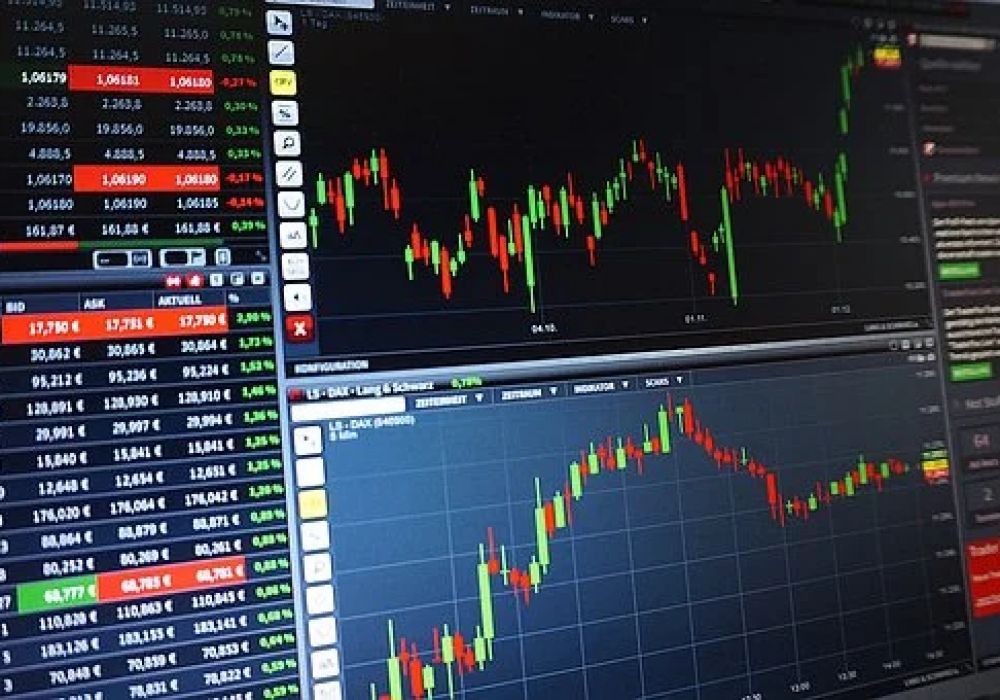Top Useful Algorithmic Trading Strategies That You Should Know About

What is algorithmic trading? It is an electronic trading system that uses mathematical and computational techniques to create, analyze, and automate trade orders. Algorithmic traders use various algorithms that execute pre-programmed instructions or strategies for opening and closing trades. These systems can be used by those who want to take advantage of the speed and price efficiency and those who don’t have time to keep their finger on the pulse. This article will discuss some top helpful Algo trading strategies that you should know about.
What are Algorithmic Trading Strategies?
Algorithmic Trading Strategies are an advanced form of trading that automatically uses computer programs to execute trades. Traders trading algorithmically should know the basics of the algorithmic trading strategy. It allows them to profit from various market conditions, and there is no limit on how many strategies one trader can employ at once.
1. Index Fund Rebalancing
Index funds are one of the best ways to invest in various stocks and bonds within an asset class. The fund managers will determine how much money needs to be put into each store and allocate accordingly. This approach is different from actively managed mutual funds, where portfolio managers would pick specific investments for their client’s portfolios based on expected growth rates instead of allocating dollars across various sectors or industries.
The problem with index funds is that they don’t adjust as market conditions change over time; if there was an increase in interest rates because inflation rises, bond prices should decline (which means the price goes down). But since stocks and bonds make up fixed percentages of most indices, it can cause issues when rebalancing the fund back to its target asset allocation.
2. Technical Analysis
Technical analysis is a popular trading method used by many Algo traders. It involves studying past price data and chart patterns to try and predict future movements. Technical analysts use various indicators and oscillators to help them make these predictions, including moving averages, MACD, RSI, and Bollinger Bands.
Technical analysis is effective in some cases but not others. For example, using intraday data on the S&P 500 index during 2010-2012 would have produced an annual 228% return with high risk. However, there are many other periods where technical trading strategies underperform buy-and-hold investing or at least deliver lower returns.
The most apparent advantage of technical analysis is that you don’t need specific skills. Anyone can learn to trade like a professional by studying chart patterns and indicators. There’s no guarantee your predictions will pay off, especially if you’re trading in a highly unpredictable market.
3. Trend-Following Strategies
Trend-following strategies are another popular type of Algo trading. These systems attempt to exploit the trend in the market by buying when prices are rising and selling when they fall.
There are many different ways to execute a trend-following strategy, but most involve some combination of price indicators, oscillators, and moving averages. For example, you might buy stocks when the 50-day moving average crosses above the 200-day moving average or sell short when the RSI falls below 30%. Many traders believe that following trends is one of the best ways to achieve consistent profits.
A well-executed trend-following system can be very profitable, especially if you’re trading in a market that has precise trend movements, e.g., commodities and forex. The main problem with this approach is the risk of getting whipsawed buying at the end of an uptrend, only selling when prices fall again. This can cause serious losses if you don’t have enough capital or your stop-loss isn’t tight enough.
4. Volume-Weighted Average Price (VWAP)
The volume-weighted average price (VWAP) is a standard indicator Algo traders use. It helps you identify the average price over a given period.
VWAP is calculated by taking the total value traded for each day and dividing it by the number of shares traded. This gives you an idea of the “average” price for a particular security on any given day.
Many traders use VWAP as part of their trading strategy, especially during periods of high volatility when prices can move sharply in either direction.
VWAP is easy to calculate and understand, making it popular among novice traders.
5. Mathematical model-based strategies
Algo trading uses complex mathematical models to predict future price movements. These models can be based on various factors, including historical data, fundamental analysis, or technical analysis.
There are many mathematical model-based strategies, but most involve using computers to analyze large amounts of data to find patterns and predict future prices.
In some cases, these systems are effective, but they’re also very complex and can be difficult for novice traders to understand and use.
Mathematical model-based strategies offer the potential for high profits with low risk. They require a lot of time and effort to set up and may not suit all traders.
6. Momentum Strategies
Momentum strategies are a type of Algo trading that attempts to capture the short-term momentum in a given market. These systems buy or sell based on whether prices have gone up or down over time rather than analyzing price trends.
They are for traders who want to make quick profits from small movements in price and don’t care about things like earnings reports and news events. The potential returns can be very high, but the risk is if you get your timing wrong.
Momentum strategies can offer impressive rewards with relatively low capital requirements assuming they work as intended. They require active management, including frequent buying and selling. For many, this level of activity will be too stressful.
8. Arbitrage

Arbitrage is a type of Algo trading that takes advantage of price discrepancies between different markets. For example, you might buy a security on one exchange and sell it immediately on another for a higher price.
Most arbitrage strategies involve using computers to scan multiple markets for pricing discrepancies. Arbitration is a low-risk way to make money in the markets. If done correctly, you can make profits with little or no risk. It cannot be easy to find profitable arbitrage opportunities, and they often disappear quickly. Also, computerized arbitrage can be susceptible to errors.
In summary, there are many different algorithmic trading strategies that you can use in your investment portfolio. Each has its unique strengths and weaknesses, so choosing the best suits your trading style and goals is essential. If you’re unsure which strategy is right for you, consult with a financial advisor or experienced trader who can help guide you in the right direction. Thanks for reading.









